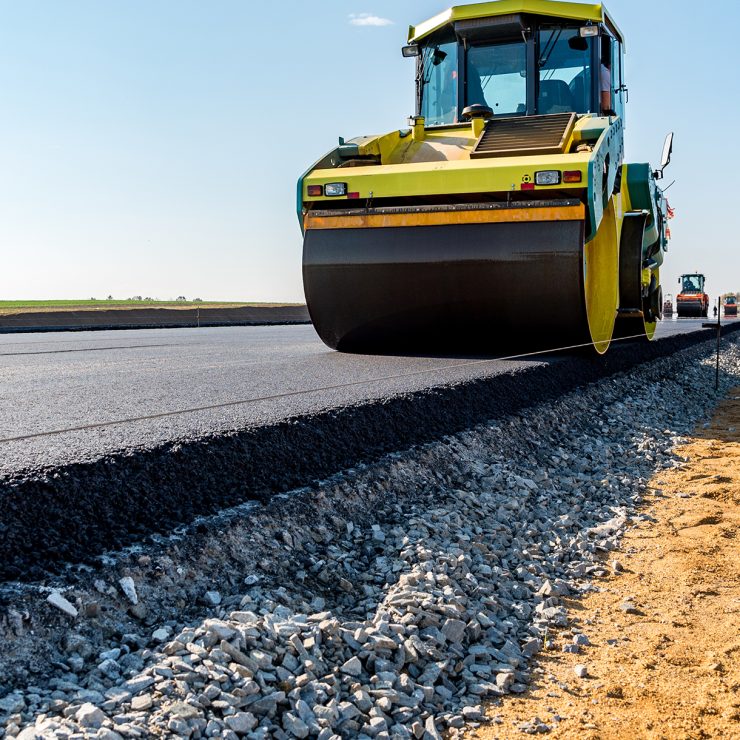By: Diana Gutierrez, ENV SP, LEED AP BD+C, O+M, SITES AP; and Nathan Straughan
Think back to the last time you watched a construction crew resurfacing a section of roadway. Hot asphalt was most likely poured out onto an uneven surface which had been milled just a few days prior. You probably put up with the construction work and traffic because in just a few short few days, all memories of potholes and noisy roadways would be long forgotten, replaced with the smooth cushion of brand-new pavement.
But you may wonder, where does all this material come from? What happens to the old asphalt? Surely this cannot be good for the environment if it smells that bad and gets that hot.
Unfortunately, you would be right. In fact, there is a lot that happens in a road surfacing project that the public eye doesn’t see: On average, 75 percent of the aggregate used is new, not recycled1. Numerous dump trucks are required to transport that aggregate from an offsite source. The aggregate and asphalt are mixed and required to reach extreme temperatures (over 300° F) to ensure proper installation. This mix is known as Hot Mix Asphalt, or HMA for short. The HMA needs to be stored in a heated container while it is waiting to be transported. It takes several steps to produce the mixture that is laid down, and each of those steps use energy (and produce carbon emissions) in the process.
This is why, in a joint effort between University of Maryland Smart Construction Center, Chamberlain Contractors, and Straughan Environmental, a new (June 2019) Verified Carbon Standard methodology was developed to provide “a framework for quantification of greenhouse gas emission reductions associated with the production and installation of Foam Stabilized Base (FSB) as substitutes for Hot Mix Asphalt (HMA) in road construction projects located in the United States.”1
How it works
This new methodology quantifies the benefits of using alternatives to HMA – FSB and asphalt emulsions. These alternative processes, used in place of HMA, remove the need for heating the asphalt/aggregate mixture. The HMA alternatives lower the viscosity of the bitumen-based adhesive so the aggregate can be mixed in at lower temperatures. The resulting product requires comparatively less energy to produce and, in some cases, allows a section of roadway to be milled and paved in the same day. In addition, these processes reduce the carbon emissions from transportation of the asphalt to project sites.
The three processes for laying FSB and asphalt emulsions named in the methodology do not require many of the steps involved with laying HMA. The first two, Cold In-Place Recycling (CIR) and Full-Depth Reclamation (FDR) both recycle the existing pavement on-site. This reduces the need for the travel of numerous dump trucks, and limits the amount of new material generated in the production process.
The last process, Cold Central Plant Recycling (CCPR), combines methods from both HMA and CIR/FDR. Like HMA, the existing pavement is milled and sent to an off-site facility. Unlike HMA, however, the milled pavement can be recycled at a local temporary central plant with portable machines. In HMA, only 25% of the aggregate used is reclaimed asphalt pavement (RAP) and is heated to make the hot mix. With CCPR, 100% the aggregate used is RAP and only the bitumen is heated, making a smaller energy footprint in the production compared to HMA.
As mentioned earlier, this methodology is available as a means of quantifying the reduction in carbon that comes from using these alternative processes. As a result, it can be utilized in the purchasing and trading of carbon credits. It is one of only two road construction methodologies reviewed and accepted by Verra’s Verified Carbon Standard Program, and is a great way to reduce our global carbon footprint. Developing this methodology and earning carbon credits for using a more efficient and energy saving strategy in road construction can benefit everyone!
1 https://verra.org/methodology/vm0039-methodology-for-us-of-fsb-in-pavement-application-v1-0/
